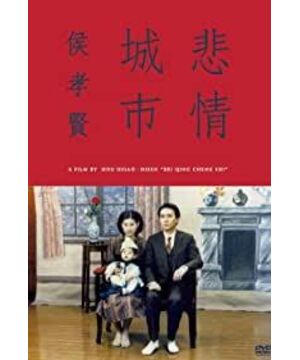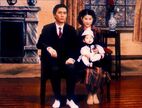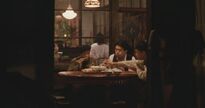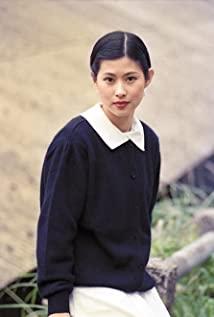However, the movie "City of Sadness", which has shown this mantra many times, is so indifferent and solemn.
For those who love Hollywood, watching this Hou Hsiao-hsien movie is suicidal, especially when they lack understanding of that turbulent history. What's more, the plot of this 150-minute film is so fragmented, the shots are so cold that people can't get close, and even the rhythm seems to be procrastinating.
When I watched "City of Sadness", I felt like the name of Hou Xiaoxian, which made people feel friendly and local, and the passion was so restrained that it was hard to describe. Pieces of writing, talk about several aspects:
First, the story. The film's story spans from 1945 to 1949. Taiwan is undergoing reconstruction and internal crisis after its liberation. The special background is the "February 28" incident in 1947. In troubled times, no matter how one struggles with one's destiny, it is always worse than a drop in the ocean. In the film, Lin Wenxiong is the eldest of the four brothers of the Lin family. He is vulgar, warm and lovely. He succeeds his old father, who called himself a "big hooligan" during the Japanese occupation era. With three younger brothers in the hope of a safe family, but ultimately unable to withstand the turbulent times of the times, he died in the gang strife, and the other three brothers did not end well. In this way, Lin Wenxiong's catchphrase is a symbol of the post-war mood of the local people throughout the film.
However, as Zhu Tianwen said, Hou Hsiao-hsien's films are lyrical rather than narrative, and finding stories in his films is doomed to disappointment. Rather than saying that the prose "City of Sadness" is about local family stories, it is more about leading us to think about the absurdity of that period and the cruelty of history. Beyond Keelung and the small town of Jiufenshan, there is a larger "city" or historical nightmare, hidden in the encounters of the four brothers of the Lin family, which are presented intermittently. However, the mission of this film is not to narrate tragic events, nor even to tell a complete rural tragedy or emotional story. The fate of the Lin family is just a mirror, reflecting the feelings and thinking about the events of the times and their contradictions.
The second is the scene. In this film, apart from the Lin family, the hospital is one of the most important scenes, so you can't expect it to be a heartwarming story. The whole film is based on the shallow narration of Kuanmei's diary, and moves secretly on the latitude, projecting the civilians, intellectuals, progressives, as well as major events and corrupt world situations of the tragic era on the rural society. This inch of land. All kinds of people, bright white sunlight, empty eyes, panicked footsteps, the blood of martyrs and heavy rumors, and love lurking in the wind and rain... appear one by one.
The dripping water hides the sea, the ants survive, and the hospital is obviously a very metaphorical scene. However, people's lives can be saved, but the situation cannot be saved. Wu Kuanmei, an uncontested nurse, is the only bystander in the main characters of the film. Because Lin Wenqing is dumb, she and she had to talk in writing, and their dialogue was cleverly designed with black and white subtitles. Even if the historical events were cryptically explained, it added a touch of warmth in the chaotic situation, so that the viewer would not be overwhelmed. Sad and cold.
The third is style. "City of Sadness" is obviously a film with a very cold and atmospheric style. First of all, you can't count on it having a complete narrative, all spread out over the four brothers of the Lin family and their associated characters. In other words, the director creates a God-like point of view, looking down and watching everything, even if it is a folk epic, it just walks through the scene step by step under certain presuppositions and gazes. The handling of the two scenes in the film is evident: after the Boss Lin was shot, the funeral was followed by the wedding of the fourth eldest Lin Wenqing and Kuan Mei.
The second is lens processing, which emphasizes internal scheduling, especially. The whole film mostly uses long shots and large panoramas with fixed camera positions. Even if there are internal actions, it makes people feel condensed; close-ups are stingy, and there are almost no close-ups; especially when it is impossible to describe, it is more often cut to Jiufen Mountain. Silent empty footage. This kind of deliberate handling of watching flowers from across the bank is obviously not the style of storytelling, but the sense of distance it creates has a seductive power.
Then there's the overall picture. Due to the stylized lens and rhythm, "Sorrowful City" is like a silent line drawing on a piece of paper, and it is also an ink painting with slow ink splashing and meditation everywhere, simple and deep; even the tone of the wedding scene tends to be heavy and dumb. The Wen Qing is the infinite blank space in this painting, and the silence is actually undercurrent. There are two other places in the film. One is that after the death of Boss Lin, the goshawk flew over the sky of Jiufen Mountain. The poetic flow of the picture is also calm and controlled; Crying bitterly or making large movements, the sadness is suppressed in silence, just like the beauty of the whole film that is indifferently suppressed; the use of music is also very natural, it is always inadvertently "pressed" when it is most needed, not raised to arouse the audience. ripples of introspection.
Watching "Sad City", there is always a sense of trance in the quietness and simplicity.
Three glasses of wine for current affairs, a game of chess in a fleeting year. At the end of the film, the camera hovers again for a long time in front of the stained glass screen in the Lin's dining room. The director is really attentive and makes you understand, "When there are too many words hidden in the heart, the most gorgeous talk is silence."
That is to say, listening to thunder in a silent place.
View more about A City of Sadness reviews











